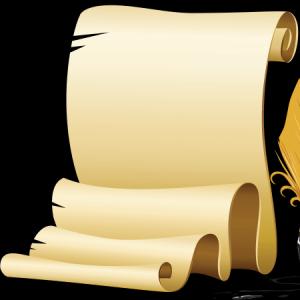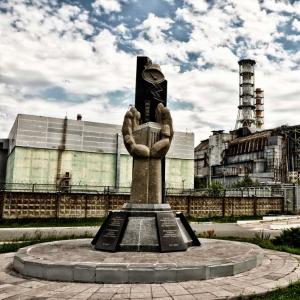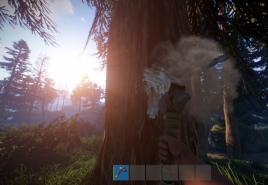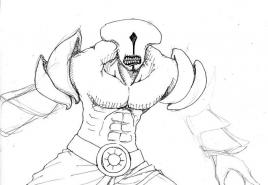April 9 significant events. Day of the Rising Sun in Closet Country
The main and discussed in the regions of the Urals
Fight for children
Resident of Yekaterinburg Julia Savinovskikh, from which the guardianship took the adopted children, continues its struggle. She sent an appeal to the supervisory authorities, including the Prosecutor General of Russia Yuri Chaika, in which she insists that the children were taken from her illegally.
The fate of the director of a sports school
Of the loud topics Chelyabinsk region you can also call the prosecutor's office appealing the sentence that was too lenient, in her opinion, to the ex-minister of social relations and the refusal to return the property to the police officer for a total of about 14 million rubles, the origin of which she could not explain.
Separately, it should be said about the fate of the director of the sports school of the Olympic reserve "Konas" Oleg Strogonov. We will remind, on March 26 he was announced about his dismissal. And on April 4, after a mass protest picket, more than ten employees of the sports school began a hunger strike. They demand to cancel Strogonov's dismissal and dismiss the head of the city sports committee Evgenia Ivanova.
Local and regional officials are aware of the protest action. Head of Chelyabinsk Evgeny Teftelev declares that hunger strike is not a solution to the problem. Meanwhile, the parents of the students are going to start their hunger strike in defense of Strogonov.
Who forgot the body fragments?
In the Orenburg region, and now throughout the country, they are actively discussing the situation in the Ramensky district of the Moscow region, at the crash site of the An-148 aircraft, flying from Moscow to Orsk on February 11. One of the relatives of the deceased passengers came there to lay flowers at the memorial. What she saw shocked her. At the crash site, she saw fragments of human bodies. Skin, ears. Scattered personal belongings of passengers. And no cordon.
The outraged girl, who lost her mother in this disaster, turned to the authorities and informed the representatives of the Investigative Committee about the situation. But no one could really explain anything to her.
On April 9, the situation in the crash zone did not change. The girl recorded video messages to the country's authorities, including the President of Russia To Vladimir Putin.
“Anyone can walk here. Here are fragments of an aircraft, fragments of bodies, I personally saw human ears. It already smells ... You know what ... This is inhuman! Nobody reacts to us! " - said the Orenburg woman.
Schoolgirl beating
In Yamal, police and investigators are investigating the circumstances of the beating of a schoolgirl. An emergency happened in the city of Labytnangi. A video was previously published on the Internet in which a group of children watches the beating of a girl.
About 30 people watched the conflict. All participants in the incident have already been identified. It is known that this happened on April 5th. An eighth grade student brutally beat a seventh grade student. This was preceded by a mutually insulting skirmish between schoolgirls.
It is known that one of the schoolgirls has been studying here since March 19. That is, there was most likely no long-term conflict. The ombudsman for children's rights in Yamal urgently left for the place of emergency Danilo Trubitsyn... According to him, now the main task is to resolve this conflict psychologically competently.
There was a harsh suppression of the meeting in Tbilisi by the forces of the Soviet Army.
In late March - early April 1989, a serious aggravation of the political situation occurred in Georgia in connection with the events in Abkhazia, which announced its secession from Georgia. This was a direct reason for informal organizations to hold a multi-day unsanctioned rally in front of the Government House in Tbilisi.
By April 6, the rally acquired an anti-Soviet orientation, a demand was put forward for Georgia to secede from the USSR. The protesters were led by Zviad Gamsakhurdia, Merab Kostava, Irakli Tsereteli, Georgy Chanturia and some others.
The organizers of the rally gathered groups that armed themselves with metal rods, chains, stones, and other improvised means. A fundraiser was organized to purchase firearms. The total number of participants in rallies in limited areas near the Government House and the building of the television studio was, according to approximate estimates, 8-10 thousand people.
The leadership of the republic believed that it was impossible to cope with the mass demonstrations of the population with the available forces of the internal troops and the police; such an event could be carried out subject to the introduction of a curfew, for which it is necessary to attract additional military units. Therefore, they decided to seek help from the union bodies.
Units of the Soviet army were sent to Tbilisi: the 4th motorized rifle regiment of the OMSDON Internal Troops (650 people), an airborne regiment (440 people), OMON and militia detachments from different cities. The dispatch of units of internal troops, special police units and troops of the Soviet Army to Georgia was carried out on the basis of the sanction of meetings in the Central Committee of the CPSU on April 7 and 8, which contradicted the current legislation, according to which the right to make such decisions belonged not to the party, but to the relevant state bodies.
The rally was cordoned off by troops and police. At 2:30 on April 9, the head of the Tbilisi Department of Internal Affairs, Colonel Gventsadze, addressed the protesters with an appeal to disperse. Then the Catholicos of Georgia Ilia II addressed the protesters.
After repeated calls to go home, force was used against the protesters. At 4 o'clock in the morning on April 9, General Igor Rodionov ordered the start of ousting the protesters from the square. As the troops reached their original positions, the protesters began to leave the square, but there was not enough time to disperse them. At the same time, it was also not taken into account that almost all exits from the square were blocked by vehicles, that is, the escape routes were sharply limited. As a result, panic and mass crush arose.
It was established that rubber truncheons were used against the rally participants, "special means" - irritating poisonous substances, small infantry shovels and in one case (according to the forensic medical examination) firearms. In turn, as the resistance grew, the protesters used improvised objects against the "forces of displacement".
16 protesters died at the scene, and three soon died in the hospital. The forensic commission found that the cause of death for all but one of those killed was asphyxiation as a result of chest compression in the crowd.
The investigation did not reveal the massive use of sapper blades with which the paratroopers were armed (59 airborne troops were involved to suppress the riots). The Georgian press still claims that dozens of civilians were hacked to death with their shovels. The Commission of the Congress of People's Deputies reported 21 cases of injuries with the use of shoulder blades. According to the prosecutor's office, medical experts identified 7 people who suffered from the shoulder blades. At the same time, 30 paratroopers were injured, which means that they were forced to defend themselves.
During the displacement operation and within a few hours after it, 251 people were admitted to hospitals in Tbilisi, of whom 183 were hospitalized. In general, for the period from April 9 to May 9, the total number of those who applied to medical institutions was about 4000 people.
The data on the wounded among the servicemen of the internal troops and the Soviet Army differed: the USSR Ministry of Internal Affairs reported that the number of injured was 69, and the report of the commission of the Minister of Defense provides data that a total of 152 servicemen were injured, of which 26 were hospitalized.
To investigate the events that took place in Tbilisi on April 9, 1989, a commission was created by the Congress of People's Deputies of the USSR. It included 24 people, including representatives of 9 Union republics, statesmen and public figures, famous scientists and writers, representatives of the army and the church. Anatoly Sobchak was elected Chairman of the Commission.
The commission stated that the preconditions for the tragic events in Tbilisi had been taking shape for a long time. They manifested crisis phenomena that covered many areas of government and public life in the republic and in the country as a whole.
The commission concluded that the military used excessive force against the demonstrators. In the conclusion of the commission it is written: "The commission ascertains the presence of serious errors and violations of the law in the course of preparation and implementation of measures to suppress the rally near the Government House in Tbilisi on the night of April 9, admitted by both all-union and republican bodies."
Kosovo - Constitution Day.Birthday
Events
Until the 19th century
- - In the battle at Lignitz, the Mongol-Tatars under the leadership of Baydar, the grandson of Genghis Khan, defeated the German-Polish army under the command of Henry II the Pious.
- - The city-states of Italy signed the Lodia Peace Treaty.
- - Moriscos, the Moors who converted to Christianity, were expelled from Spain.
- - The world's first public art exhibition was held in Paris.
- - Robert de la Salle erected a cross and proclaimed the Mississippi Delta the possession of King Louis XIV of France, after whom Louisiana is named.
- - Decree of Peter I "On monitoring cleanliness in Moscow and on punishment for throwing litter and all kinds of droppings on the streets and lanes."
- - Simon Fraser, 11th Lord Lovat, was executed in London on charges of high treason. Simon Fraser, 11th Baron Lovat ). He became the last person in England to be sentenced to beheading.
- - English chemist Humphrey Davy discovered the anesthetic properties of laughing gas.
19th century
XX century
- - Tram service is open in Tsaritsyno. The first tram line, 10 km long, connected the central and Zatsaritsyn parts of the city.
- - Mexican-American incident in Tampico.
- - the Bolsheviks, in the number of 31 people led by Lenin, left Zurich.
- - Islam is proclaimed the official religion in Turkey.
- - signing of the Soviet-German Trade and Credit Agreement.
- - the Decree of the Presidium of the Supreme Soviet of the USSR was issued on the division of the People's Commissariat of Water Transport into the People's Commissariat of the USSR Sea Fleet and the People's Commissariat of the USSR River Fleet.
- - Invasion of Nazi Germany in Norway and Denmark. The start of the Danish-Norwegian operation during World War II.
- - The German Heavy Cruiser Blucher was sunk in the Oslofjord.
-
- Soviet troops stormed the fortress city of Konigsberg, present-day Kaliningrad. Commandant Otto Läsch signed an act of surrender of the city.
- For participation in a conspiracy against Hitler, the head of the Abwehr, Admiral Canaris, was hanged in the Flossenbürg concentration camp.
- - Adopted a closed resolution of the Council of Ministers of the USSR on the creation of the KB-11 design bureau at Laboratory No. 2 of the USSR Academy of Sciences. On the border of the Nizhny Novgorod region and Mordovia in the Sarov forests, an organization appeared to develop the Soviet nuclear weapons, better known under the name Arzamas-16 and now called the Russian Federal Nuclear Center - All-Russian Scientific Research Institute of Experimental Physics (RFNC - VNIIEF).
- - Massacre in Deir Yassin: events during which the Arab village of Deir Yassin was captured by the Jewish irregulars of the Irgun and Lehi, belonging to the radical organizations of the Zionist revisionists. During the seizure, an estimated 107 to 254 villagers were killed in violent clashes.
- - The research station "North Pole-3" was organized under the leadership of A. F. Treshnikov.
- - Winston Churchill became the first foreigner to be awarded the title of Honorary Citizen of the United States by the US Congress.
- - The Vatican canceled the Index of Forbidden Books, which existed for more than four centuries.
- - In Czechoslovakia, the program document "The Czechoslovak Way to Socialism" was published, which proposed economic reforms and the democratization of public and political life. The Prague Spring did not last long, and in August the troops of the Warsaw Pact countries were brought into the country.
- - Debut concert of "King Crimson" in the London club "Speakisi".
- - Paul McCartney announced that he will no longer work with John Lennon, ending the existence of the Beatles as a group.
- - Signing of the Soviet-Iraqi Treaty of Friendship and Cooperation.
- - The first Soviet supertanker "Crimea" was launched in Kerch.
-
- American Douglas Engelbart was awarded the honorary prize of the Massachusetts Institute of Technology ($ 500,000) for the invention of the computer mouse (1968).
- Dispersal of a rally in Tbilisi.
- - Adoption by the Supreme Council of Georgia of the Act on the restoration of the state independence of Georgia.
- - Eduard Shevardnadze was re-elected President of Georgia.
XXI Century
- - Prince Charles of Wales and Camilla Parker-Bowles got married at Windsor Town Hall.
- - Ukraine has banned Nazi and communist symbols.
Born
Until the 19th century
- - Thomas Johann Seebeck (d.), German physicist.
- - Theobald Boehm (d.) - German instrumental master, flutist and composer, creator of the modern transverse flute.
19th century
- - Elias Lönnrot (d.), Finnish folklorist who recorded and published the national Karelian-Finnish epic "Kalevala".
- - Isambard Kingdom Brunel (d.), English engineer, creator of the first transatlantic passenger ship.
- - Charles-Pierre Baudelaire (d.), French poet.
- - Rostislav Andreevich Fadeev (d.), Russian military historian, publicist, major general.
- - Edward Muybridge (d.), English photographer, inventor of the Zoopraxiscope, a film projection device.
- - Francesco Paolo Tosti (d.), Italian composer, court musician of the English kings.
- - Thor Neve Lange - Danish classical philologist, poet, translator, linguist, teacher, journalist (d. 1915).
-
- Charles Proteus Steinmetz (d.), American electrical engineer.
- Erich Ludendorff (d.), German military and political figure, one of the major figures in Germany during the First World War, a supporter of the withdrawal of the Russian Empire from the war by any means (both military and revolutionary), Hitler's associate, the developer of the concept of "total war", one of the organizers of the Munich and Kapp coups.
- - Leon Blum (d.), French politician and statesman, leader of the French Socialist Party (SFIO).
- - Viktor Aleksandrovich Vesnin (d.), Architect, first president of the USSR Academy of Architecture (Dneproges, Film Actor's Studio Theater in Moscow).
- - Ivan Aleksandrovich Ilyin (d.), Religious philosopher, lawyer, publicist.
- - Sol Yurok (real name Solomon Izrailevich Gurkov, eng. Sol hurok; mind. ), American impresario.
- - Ephraim Zimbalist (d.), Russian-American violinist.
- - Vlasta Burian (d.), Czech theater and film actor.
- - Paul Robson (d.), American Negro bass singer, actor, public figure.
XX century
- - Olga Vasilievna Perovskaya (d.), Russian Soviet children's writer.
- - Gregory Goodwin Pincus (eng. Gregory goodwin pincus) (d.), American endocrinologist, whose work on the study of the contraceptive properties of steroids led to the emergence of effective oral contraceptives.
- - Antal Dorati (d.), American conductor.
- - Lev Zinovievich Kopelev (d.), Critic and literary critic.
-
- Ivan Mikhailovich Savchenko (d.) Soviet shipbuilder, Hero of Socialist Labor.
- John Presper Eckert (eng. John Presper Eckert) (d.), American inventor of the electronic computer.
- - Anatol Potemkovsky (d.), Polish satirist.
- - Ernst Iosifovich Unknown, Soviet and American sculptor.
-
- Vsevolod Dmitrievich Safonov (d.), Film actor ("Belorusskiy vokzal", "Deja Vu").
- Hugh Hefner, founder of Playboy magazine.
- - Tatiana Ivanovna Zaslavskaya, academician-economist.
- - Jean-Paul Belmondo, French actor.
- - Ernst Romanov, Soviet and Russian theater and film actor (films "State Border", "Red Diplomatic Courier", "Blue Carbuncle").
- - Viktor Stepanovich Chernomyrdin (d.), Russian politician, Prime Minister Russian Federation (1992-1998).
- - Bernard-Marie Coltes, French playwright.
- - Oleg Dolgov, Soviet and Russian physicist, professor.
- - Dennis Quaid, American film actor.
- - Elena Kondulainen, Russian actress and singer, Honored Artist of the Russian Federation.
-
- Polina Porizkova, American model and actress (originally from Czechoslovakia).
- Mark Pellegrino, American film actor.
- - Cynthia Nixon, American actress and theater director.
- - Jacques Villeneuve, 1997 Formula 1 World Champion.
- - Jenna Jameson, American pornographic actress, fashion model and entrepreneur.
- - Kristen Stewart, American actress.
Passed away
- - Edward IV, King of England (- and - gg.) (B.).
- - Lorenzo the Magnificent (Medici) (b.), Florentine ruler since 1469.
- - François Rabelais, French writer.
- - Michael Agricola, Finnish reformer.
- - Francis Bacon (b.), English philosopher, historian, politician.
- - Christian von Wolf (b.), German scientist and encyclopedist.
- - Nikolai Ivanovich Krol (b.), Russian poet, prose writer, playwright and publicist.
- - Dante Gabriel Rossetti (b.), English artist and poet.
- - Ivan Sergeevich Rukavishnikov (b.), Russian writer.
- - shot Artyom Vesyoliy (b.), Russian and soviet writer, author of the book "Russia Washed in Blood".
- - executed Wilhelm Franz Canaris (b.), German admiral, leader of the Abwehr (- Mr.
- - assassinated by Jorge Gaitana, leader of the Liberal Party of Colombia.
- - Wright, Frank Lloyd (b.), American Architect.
- - Leonid Solovyov (b.), Writer, author of novels about Khoja Nasreddin.
- - Nicole Berger (b.), French actress.
- - Michael Wilson (b.), American screenwriter.
- - Margarita Rudomino (b.), Founder and first head of the Library of Foreign Literature, now bearing her name.
- - Sidney Lumet (b.), American director.
- - Rogvold Sukhoverko (b.), Soviet and Russian theater and film actor.
- - Alexander Grigorievich Galko (b.), Theater and film actor, People's Artist of the RSFSR.
Folk calendar, signs and folklore of Russia
Matryona Nastovitsa... Half-tile. Little pig. Matryona.
see also
| And about this period of the campaign, when the troops without boots and fur coats, with incomplete provisions, without vodka, spend the night for months in the snow and at fifteen degrees of frost; when the day is only seven and eight o'clock, and the rest is night, during which there can be no influence of discipline; when, not as in a battle, for a few hours only people are led into the area of \u200b\u200bdeath, where there is no longer discipline, and when people live for months, every minute fighting death from hunger and cold; when half of the army perishes in a month, historians tell us about this period of the campaign, how Miloradovich had to make a flank march there, and Tormasov there then and how Chichagov had to move there that (move above the knee in the snow), and how that knocked over and cut off, etc., etc. The Russians, who were half dying, did everything that could and should have been done to achieve a goal worthy of the people, and it is not their fault that other Russian people, sitting in warm rooms, assumed to do what was impossible. All this strange, now incomprehensible contradiction of fact with the description of history occurs only because the historians who wrote about this event wrote the history of the wonderful feelings and words of different generals, and not the history of events. For them, the words of Miloradovich, the awards that this and that general received, and their assumptions seem very amusing; and the question of those fifty thousand who remained in hospitals and graves does not even interest them, because it is not subject to their study. Meanwhile, one has only to turn away from studying reports and general plans, but to delve into the movement of those hundreds of thousands of people who took a direct, direct part in the event, and all the questions that seemed previously insoluble, suddenly, with extraordinary ease and simplicity, receive an undoubted solution. The purpose of cutting off Napoleon with the army never existed, except in the imagination of a dozen people. It could not exist because it was meaningless and it was impossible to achieve it. The goal of the people was one: to cleanse their land from the invasion. This goal was achieved, firstly, by itself, since the French fled, and therefore it was only necessary not to stop this movement. Secondly, this goal was achieved by the actions of the people's war, which destroyed the French, and, thirdly, by the fact that a large Russian army followed the French, ready to use force if the French movement stopped. The Russian army was supposed to act like a whip on a running animal. And an experienced driver knew that the most advantageous thing was to keep the whip raised, threatening them, and not to lash a running animal on the head. When a person sees a dying animal, horror seizes him: what he himself is - his essence, in his eyes is obviously destroyed - ceases to be. But when a dying person is a person, and a beloved person is felt, then, in addition to the horror of the destruction of life, one feels a rupture and a spiritual wound, which, like a physical wound, sometimes kills, sometimes heals, but always hurts and is afraid of an external irritating touch. But pure, complete sadness is just as impossible as pure and complete joy. Princess Marya, in her position as one independent mistress of her fate, guardian and educator of her nephew, was the first to be called by life from that world of sorrow in which she lived for the first two weeks. She received letters from relatives to which she had to answer; the room in which Nikolenka was placed was damp, and he began to cough. Alpatych arrived in Yaroslavl with business reports and with suggestions and advice to move to Moscow to the Vzdvizhensky house, which remained intact and required only minor repairs. Life did not stop, and one had to live. No matter how hard it was for Princess Marya to leave that world of solitary contemplation in which she had lived until now, no matter how sorry and as if ashamed it was to leave Natasha alone - the worries of life demanded her participation, and she involuntarily gave herself up to them. She checked the scores with Alpatych, consulted with Desalus about her nephew and made orders and preparations for her move to Moscow. In addition to the general feeling of alienation from all people, Natasha at this time experienced a special feeling of alienation from the faces of her family. All her own: father, mother, Sonya, were so close to her, accustomed, so everyday that all their words and feelings seemed to her an insult to the world in which she had been living recently, and she was not only indifferent, but looked at them with hostility. ... She heard Dunyasha's words about Pyotr Ilyich, about misfortune, but did not understand them. Princess Marya postponed her departure. Sonya, Count tried to replace Natasha, but could not. They saw that she alone could keep her mother from mad despair. For three weeks Natasha lived hopelessly with her mother, slept on an armchair in her room, gave her drink, fed her and spoke to her without ceasing, - she said, because one gentle, caressing voice calmed the Countess. |
|---|
The planet itself regulates its life cycle, and the Sun is not the main thing here. So, all planets and celestial bodies in general are living creatures.
It's just that life form - silicon. And our planet breathes within its cycle. From this breath, the seasons arise, since the heat of the Sun is used not only for heating. There is a very complex process of ether transformation into matter and back ...Commissioner Qatar
So, our planet Earth is a living, living creature!
What follows from this?
But what: how the Planet affects everything that is on it - living and inanimate (as we think it is inanimate), and vice versa - a person and his actions have an impact on it.
Therefore, perhaps, at one time such a definition of NOOSPHERE appeared.

04/09/2018 A STRONG ENERGY SPLASH occurred on the AIR! It was repeated on April 10 ...
This can be seen on the diagrams of SCHUMAN RESONANCES, amplitude and quality factor, effective heights of the ionosphere (according to the data site of the monitoring station of Tomsk State University)




Why such phenomena occur, until now there is no complete explanation.
A little about definitions:
To begin with, why is this possible?
Because the Earth and the surrounding air layer (ionosphere) form a giant spherical resonator. In such a resonator, waves of a certain length propagate (resonate) well.
The reflection of radio waves of various ranges from the ionosphere surrounding the Earth at heights of 50-100 km ensures their propagation over long distances, up to around the world.
Natural resonances in the Earth-ionosphere cavity in the middle of the last 20th century were calculated munich professor technical university W.O. Schuman... The resonant frequencies predicted by him correspond to the so-called "standing waves" in a thin spherical waveguide Earth-ionosphere. The average monthly experimentally observed values \u200b\u200bof the most clearly pronounced resonance frequencies are approximately 8, 14, 20, 26, 32 Hz.
According to most geophysicists, the cause of excitation electromagnetic waves at resonant frequencies, determined by the shape and size of the Earth, there are discharges of atmospheric electricity - lightning, caused by the entire set of thunderstorms on the globe (approximately 100 discharges per second).
And now the most important thing: resonances with resonances, where without them, but bursts of AMPLITUDE of Schumann resonance waves and jumps on the graph of operating heights (propagation of radio waves) do not occur every day!
This is exactly the case, take my word for it. This topic interested me about 10 years ago, and over the years a large base of factual material has accumulated.
Therefore, I dare to assume from the diagrams presented above that THESE JUMPS occurred due to human impact as part of the noosphere !!!
Because there is a connection: the Schumann frequency (threshold lower standing electromagnetic wave frequency of 7.8 Hz coincides with the frequency of the so-called alpha rhythm of the human brain - a rhythm that appears only in sleep or during meditation, and alpha waves and other electrical and magnetic vibrations in the human brain are associated with the forms of thinking, with the nature of the images that arise in the thinking brain.
Let's remember what happened in those days?
For the first time, in many years, the FEELING of great trouble due to







